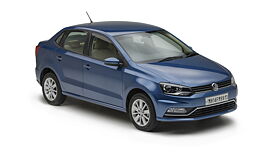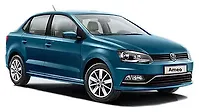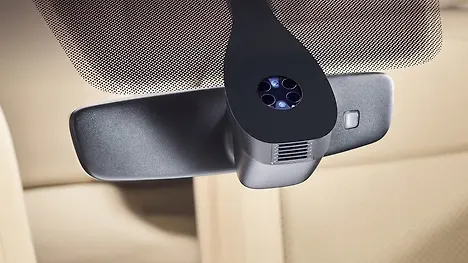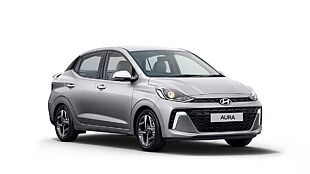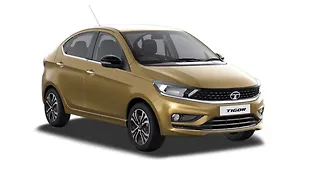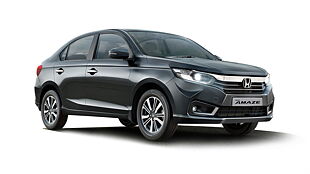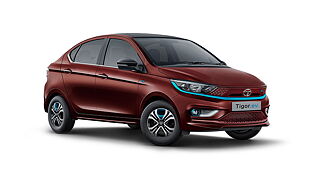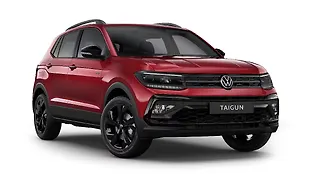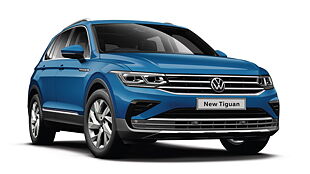What’s the excitement about?

The sun dipped over the horizon as Ameya and I drove down the Mumbai-Pune expressway, en-route to Chakan, Pune. This may sound like a regular drill for us auto-journalists. But, this time around, it was special. We were headed to Volkswagen’s MotorSport division to build an Ameo Cup car from the ground-up. Yes, you read that right!
Understandably, I didn’t sleep much the night before. But long before I gulped down some RedBull, the sheer sight of VW MotorSport’s assembly area spiked my adrenaline levels to those of an excited teenager. While Sirish Vissa, Head-MotorSport, VW, showed us around their division, he animated the initial stages of the assembly process by nudging in the direction of a lone body-shell jacked up on the ramp. And next to it was a mouth-watering amalgamation of components arranged on the floor. Oh, and by the way, everything’s hand-built!

Sirish’s eyes gleamed as he explained how the Ameo Cup car’s body-shell differed from the production Ameo. His passion was evident even as he caressed the portions where it was stripped clear of all those extra brackets that weren’t needed. Once stripped, the shell undergoes a thorough seam-welding. Let’s just say that if this isn’t carried out, the body-shell begins to crack around the spot-welds. So, effectively, the race car will start off working well, but after 2-3 years, it will start cracking and flex severely. “By doing the seam-welds, one essentially eliminates the spot-welds from being the only connection. It is done everywhere so that all the panels act as one continuous panel,” Sirish added.

Once seam-welded, the roll cage gets braced on to the shell and the entire thing is wheeled into VW MotorSport’s own little paint shop for some fresh coats of paint. Now, the first job in assembling the Ameo Cup car is the one that takes the longest - installing the wiring harness. The rest is just bolting all of the components on. These pre-assembled components, such as the rear axle, are already ready with discs and callipers. The same thing goes for the front axle assembly - the lower arms, steering rack, anti-roll bar. Everything’s ready to be plonked in – the four bolts are tightened, and it is basically done!

So just for the sake of mentioning everything in order, the brake lines first go on along with the ABS unit, then the fuel tank is set-up, after which the rear and front axle are attached. While at it, a different set of technicians work on the interiors to fit the battery, extinguisher and related wiring. After all of that, the monster engine/gearbox goes in, which is then followed by the front-end module. Let’s just say, that, if you’re going by the book, this is quite different as opposed to how a production car is built - where the engine/gearbox goes in from the bottom. In the Ameo Cup car, the engine is set from the top.
I’ll let you breathe for now, but remember, the best is yet to come.

What is what?
As you’d guessed, things got spicy as we lurked around to see what components exactly find their way into the Ameo Cup car. Like Sirish had described it - a combination of parts that’s easy to obtain, with minimum time for procurement, while also being cost effective. In short, a concoction of stock road-going Ameo parts, some components that have been dug out of the VW group’s parts-bin, and a few hand-picked exquisite components – all of which we will detail in due course.

What’s been retained from the stock car is the front sub-frame and the entire front suspension that even includes things like the lower arm, axle and knuckles. This pretty much keeps replacement costs really low. On the other hand, those components that’ve been syphoned off the VW parts-bin are things such as the Polo GTI’s engine (explicitly detailed later), its radiator, drive-shaft and the rear axle - since it is slightly stronger with thicker anti-roll bars and, most importantly, has the disc set-up. Its pristine braking is thanks to them borrowing the callipers of the VW Golf IV! Simply smart.

Sirish disclosed that his team could have easily opted for a proper motorsport driveshaft. But they decided otherwise for two reasons. One being it turned out to be easier to spend the money involved to tweak the gearbox assembly in-house, just so that the gearbox accepted the stock drive-shaft. Secondly, going stock meant that when VW’s MotorSport team needed a drive-shaft to be replaced, they’d not only have ready access to the part, but also get it cheaply.

Similarly, Sirish also claimed that if the team wanted to run an independent rear suspension, they could easily pull that off in no time. Simply because it already runs in other VW Group cars. “So, we can always cut and paste that tech in the Ameo Cup car. This is the old-generation car which is based on the PQ platform. Once we go to MQB, it becomes even easier” Sirish grinned.

Having gone through what’s stock and what’s been used off other VW cars, we now move on to the exotic components such as the custom-made flywheel, and the engine/transmission mounts. Then there’s the MotorSport ECU, a huge-ass BMC air-filter, followed by the dampers from KNW, and springs from Eibach. Going forth, the brake pads are sourced from Gama, the alloy wheels are obtained from Team Dynamics, and the six-speed sequential gearbox is made by a French company called 3MO. The only thing left to mention are the brass bushes which replace the stock bushes on the front sub-frame.

Heart of the matter

The 205bhp Polo GTI’s completely-built-up engine gets inconspicuously delivered to VW’s MotorSport in a wooden crate. Of course, since there’s no air-con, the alternator and ac compressor are absent, and in its place, a pulley gets bolted on. As soon as the crate is opened, the engine harness is removed so that the couplers can be modified to fit VW’s MotorSport ECU.

In fact, the biggest challenge back in the day, as Sirish described it, was getting the engine/gearbox combo into the engine bay. And that’s because the gearbox is a pretty massive sequential box from 3MO. The technicians eventually got the powertrain shoe-horned into the bay by squeezing the bell-housing section. Or, in other words, by using a more compact flywheel that needed to be custom-built.

But the sequential gearbox itself, as Sirish excitingly added, is seriously over-kill as it handles up to 500Nm of torque, which, their motor doesn’t make as of now. But for Sirish’s team, it was crucial for their set-up to have a high level of reliability. It is for this very reason that the entire powertrain assembly is also clamped on to the body-shell with custom-made engine/gearbox mounts. These are solid machined pieces that have been fabricated keeping in mind zero tolerance towards movement. With vibrations being the least of their worries, the idea was to ensure the motor did not move because if it did, there’s a lot of mass moving around which is a sure-shot recipe for problems to crop-up.

Once the engine is set into the bay, everything goes into fast-forward mode where all components are quickly torque-wrenched before linking the ECU and the related wiring. After that, a laptop gets hooked-up to calibrate the throttle position and gear position sensor. And while at it, other technicians plonk the windscreen and alloy wheels on, all the discs are bled-filled with Motul Dot 4 brake oil (boiling point 325 degree-C), and the coolant is tanked up. Simultaneously, the boot-lid with the wild wing, doors, fenders, bonnet and bumper all get fastened in a jiffy, giving the Ameo Cup car its purposeful stance. In the end, Ameya then took the honours and fired the baby. Pure ecstasy it was, we agreed later.

A shattering day comes to an end

Now, let’s rewind a bit. VW MotorSport technicians, Ameya and I began assembling the Ameo Cup car at 9:15am, and we were done by 4:30pm. For me, it was not just about building a race car in one business day, but about getting that ‘high’ to be also able to listen to a race car’s pipes after a day’s hard work on a spectacular machine.

As I pulled the gloves off my wrists on my way out of the assembly bay, I saw the glitter in Sirish’s eyes. His smile not only goes to show how content their team was with the brilliant Ameo Cup car, but it also hid the fact that they’ve still got many more tricks up their sleeve when the time comes to upgrade. A great job pulled-off by Sirish Vissa and VW’s MotorSport team, and cheers for giving us an opportunity of a lifetime!

Interview with Sirish Vissa

CarWale: Are all the Ameo Cup cars that we see here technically identical?
Sirish Vissa: Yes. In terms of the way the cars are built, I mean our 25 race cars (plus spare and taxi cars), they even have the seat-rails welded on to the passenger’s side as well. So they’re all universal. Let us not do anything special. And the other thing we need to make sure is that they all weigh about the same. So there’s no weight advantage of one car over another.
CarWale: How much has the rigidity gone up by after all these jobs?
Sirish Vissa: Rigidity is up by 30 per cent when compared to the road car. It might even be more.
CarWale: Is the gearbox already fixed to the engine assembly?
Sirish Vissa: Yes, it is what they term ‘dressing-up’ the engine, normally. This is when they fit the entire wiring harness, and put-in all of the plumbing too. The harness is actually the original harness from the engine, but with modifications. So we run a couple of different sensors in addition to what’s already on the normal engine. But other than that, most of it is off-the-road car. Now, the six-speed sequential gearbox is made by a French company called 3MO which, frankly speaking, anybody can buy off their website since it is a universal ‘box. There are set ratios available for this particular size of gearbox, where you can pick and choose what you want. However, the section where it connects to the engine (bell-housing), was designed by VW motorsport to match everything.
So, that’s one. The other thing that we did a lot of work on, was to get the output shafts done right. Just so that the stock drive shafts just bolt in. And honestly, when it is all put together, you’ll notice that we’ve had to grind a wee-bit off the corners to avoid it from touching the sides of the engine bay. It is, what could be termed, a tight fit!
CarWale: Are the paddle shifters hydraulically actuated?
Sirish Vissa: Actually they are electronic. The actuator unit is an electro-magnetic or massive solenoid which is placed where the gear lever is normally hooked up with the shaft.
CarWale: Are there any modifications done to the engine?
Sirish Vissa: So, in terms of the engine itself, it is bone stock. You know, it is really easy for us to keep it that way, and I’ll tell you why. Normally, on a given race weekend, we cover about 300-350km. And we have done around 12,000km (which is 5-6 seasons of racing) on the track without even an oil change, just to establish the reliability of the motor!
The good thing about being a part of the VW group is that we’ve got access to a fantastic part-bin, where we can pick and choose, and mix and match different stuff. Like for example, in terms of the Ameo Cup car’s radiator, it is actually the same radiator that goes into the Polo GTI and a couple of other VW Group cars. Since this is what we call a hot-weather radiator, it is the biggest size that’s available, and it works perfectly fine with us. As a matter of fact, this same radiator also works well when the motor is tuned-up for the drag-races.
CarWale: Can this motor deal with more power?
Sirish Vissa: If I go with a bigger turbo on this engine, I can go up to 300bhp without any problems. The bottom-end and the engine itself, can handle it. Between the 1.8-litre and the 2-litre motor, the block is essentially the same and so is the bore, but the stroke is different. Which means that the 2-litre has a different crank/connecting rods/pistons. This allows us to cook-up 350-400bhp without any fuss. So in theory, the bottom end on this engine can handle 400+bhp without any hassles.
CarWale: These wheels look fabulous. They must be super light, right?
Sirish Vissa: Yes. It has been a long journey. Originally, we sourced our alloy wheels from ATS in Germany. And until the time it was cast in Germany, it was brilliant. However, when the company decided to source its rims from their last supplier, they emerged heavier and not as strong. Well, they wouldn’t break, but would bend.
So we shifted from ATS to Team Dynamics (UK). This is again a cast-wheel, but it is really strong. And, we’re back to the kind of strength we used to have with the German ATS wheels. Going forward, we are also trying to work with Wheels India in developing a new rim, which seems to be working fine in the Turbo-Class currently. Basically, we’re testing it on the Turbo-Class to see if things work out, maybe before using it across all platforms.
We basically started off with a weight of 9kgs, and it is now down to 7kg with no compromise in strength. Since it is a forged wheel, the grain structure is automatically better and hence denser. And being denser makes it stronger, at least in theory. So, building on this theory, and since the wheel is now stronger, you can start reducing the weight. We started off at 9kg, after which it got trimmed to 8.5kg, and then on to 7.5kg before ending up at 7kg (current).
Pictures: Kapil Angane

